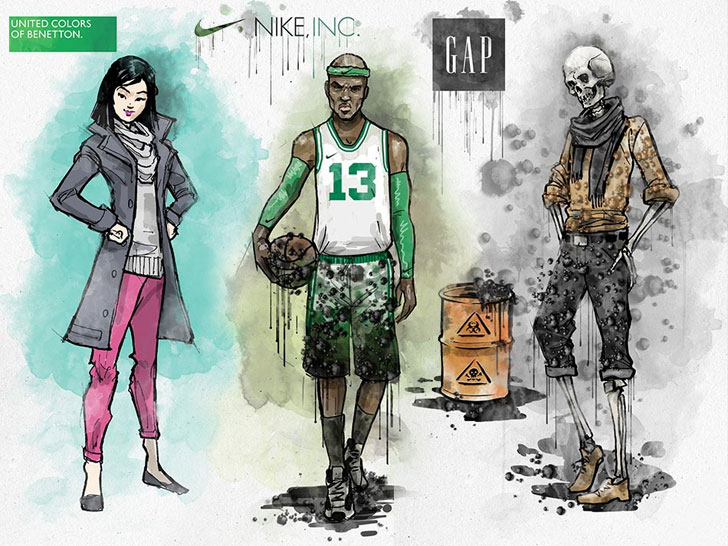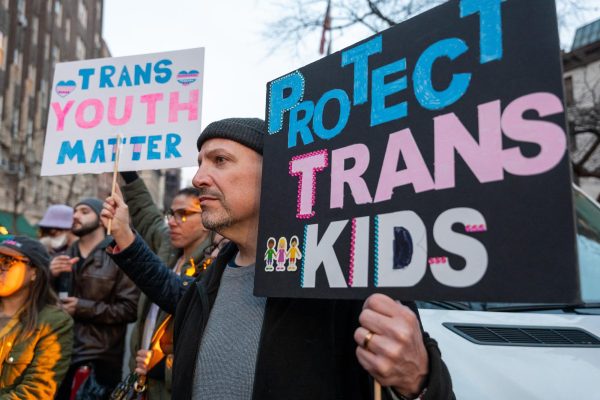Fast fashion is a plight on people, the planet
May 1, 2019
Fast fashion is inexpensive clothing that is produced quickly in large quantities that can come from sample ideas such as catwalks or from the celebrity culture which is put into the mass markets to satisfy consumers on the latest trends. Fast Fashion is prominent with brands like Zara releasing 20,000 designs annually, and other stores like Topshop that sell 400 new designs of clothing every week.
Fast fashion clothing is popular and brings loads of consumers. But, since these industries produce products fast, cheap, and quick, there is underlying corruption.
The Global Labor Justice (GLJ) organization has came to the forefront to stop the problem of corruption. The GLJ is a “strategy hub,” with a stated mission “to expand labor rights and new forms of bargaining on global value chains and international labor migration corridors.” The GLJ has put support behind the #MeToo movement because of gender-based abuse in fast fashion companies. They have researched on a study that there was exploitation and mistreatment in the supplier factories of Gap, and H&M.
With this study, the GLJ has indicated the Asian female garment workers experienced physical abuse, sexual harassment, poor work conditions, and forced labor at times inside clothing manufacturing factories. These incidents puts it into perspective on how their clothes are made when you buy from these brands. The problems aren’t limited to the treatment of the people who make the clothing.
Detox Catwalk is a campaign that Greenpeace has started. They are taking steps to stop hazardous chemicals from the manufacture of clothing from getting rivers and endangering other natural environments. This campaign was first launched in July of 2011. As stated by Greenpeace, “asking the textile industry to urgently take responsibility for its contribution to toxic pollution.” This campaign is in its third edition, they are trying to eliminate all chemicals being dumped from these fast fashion companies by 2020.
Fast fashion clothing uses cheap materials. Toxic textile dyes are used. Fast fashion is the second highest polluter of clean water globally after agriculture as a result. Greenpeace believes that the solution to this problem is to stop textile waste from being dumped into the rivers and oceans. As Greenpeace passionately describes it, “we need the global textile waste industry to be a ‘trend setter,’ and take a stand on the environmental and human impact of fashion.”
Polyester, which is one of the most popular materials that is used in fast fashion clothing is derived from fossil fuels. Polyester is manufactured by using water, energy, coal, gas, oil, and a highly toxic chemical called antimony. This can cause global warming and can leave microfibers (plastic-based thread) in oceans and rivers.
Animal life has been suffering for the years because they ingested the microfibers and textile dyes. Primary micro-plastics are estimated to make up 35% of the waste in the marine environment. This is an issue that can be simply solved by industries using different materials to make their clothes. Over 235 million pieces of clothing were sent to the landfills in the U.K. That was just in the spring of 2017.
It has also been reported that real fur and cat fur were being passed as faux fur (fake fur) in the fast fashion industry. Animal charity Humane Society International/U.K. and Sky News discovered that real cat fur was being sold, and people were misguided since it was on sale as Faux Fur. These brands have said that it is fake fur, which they should be shut down for being fallacious. There are more countless incidents of this being sold.
The best advice for shoppers who want to be environmentally and ethically responsible is to be informed and have a good understanding of what you are actually buying from these brands. Fast fashion continues to take hold in greater numbers every year and we will eventually have extreme environmental issues, exploitation of labor, and scandalous incidents in the future. With how much people value buying clothes at cheap prices, it only provides the instant gratification that will never be taken into consideration on what issues that are actually occurring in these industries.
You can join and learn about the Detox Catwalk campaign at Greenpeace. With the Detox solution, a commitment is made to eliminating all hazardous chemicals in clothing from being dumped anywhere in the environment, and buying things from these retailers to save the environment.
We need to work together to eliminate these hazardous chemicals from entering our environment.






















